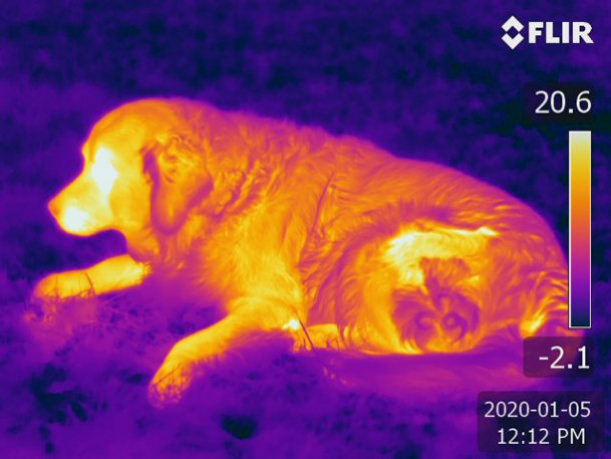An international research team from Sweden and Hungary have discovered an entirely new sense in dogs: using their cold, wet nose tips, dogs can sense the heat from other animals or a human.
“It has taken a rather long time to discover this, given that dog and man have lived side by side for 15,000 years, and we have remained unaware of this ability”, says Ronald Kröger, professor at Lund University.
The research consisted of two different studies. In behavioral experiments in Lund, the team found that dogs chose an object with the surface temperature of a small, furry animal over a neutral object, at a distance of 1.6 meters.
In Budapest, the researchers used magnetic resonance imaging to look at the response to heat radiation – at about the same temperatures as the previous experiment. The heat stimuli triggered a response in the part of the brain that processes sensory information from the skin, probably from the rhinarium.
According to the researchers, the study is another piece of the puzzle explaining why certain predators, for example wolves, are such skilled hunters. In addition to smell, sight and hearing, it seems like they can detect the heat from prey at a distance. The animals being hunted, on the other hand, would not benefit from emitting a lot of heat radiation, perhaps explaining why lambs have thick fur, for instance.
The study also provides guidance on which dog breeds should be chosen for hunting and rescue operations, such as those that take place after earthquakes and avalanches.
“The dog’s nose must be cold to be able to find a warm human body. Our results indicate that you shouldn’t choose dogs that cannot cool their nose due to breeding. Also, training dogs could be more effective if heat was used in addition to smell”, says Ronald Kröger.
The dogs that took part in the study have been trained using low heat radiation. Ronald Kröger’s own golden retriever, Kevin, participated. The researchers have only used a reward system to train the dogs, and never any type of punishment.















